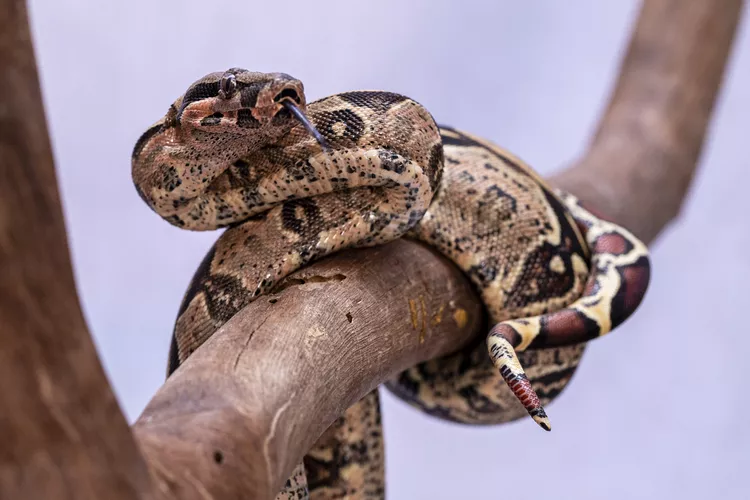
Description:
Scientific name: Boa imperator
Life span: Up to 30 years in captivity
The Central American boa, which is frequently mistaken for the red-tailed boa but is actually a separate species of snake and doesn’t become as long, is a reptile. It is a common snake found in the pet market, is non-venomous, and has needs that are quite similar to those of other snakes from Central and South America.

Native Region/Habitat
Belize, Colombia, Costa Rica, El Salvador, Ecuador, Guatemala, Honduras, Mexico, Nicaragua, Panama, Peru, and Venezuela are the countries where native Central American boas can be found. They enjoy the conditions found in tropical rainforests, thus their home in captivity should closely resemble these.
Behavior:
These patterned snakes are crepuscular and content to live alone. This means that they are most active during sunrise and dusk, but they occasionally can be seen basking in their heat light. But, when they are younger and lighter, they will climb trees and bushes. They spend the majority of their time on the ground. The Central American boa is not commonly seen as an aggressive species, but like most snakes, it has the potential to strike when it feels threatened or afraid. They are often peaceful and simple to handle.
Care As a pet/In captivity:
Understanding the precise maintenance requirements for a Central American boa might help you keep it healthy and extend its life.
- A Central American Boa needs a sizable enclosure with a tight-fitting lid. Young boas can be kept in a glass terrarium or aquarium, but as your snake becomes older, a bigger cage will be required. To allow your snake to try to stretch out completely, the cage should ideally be the length it will be at maturity.
- To provide a basking area of around 90 degrees, ceramic base heat bulbs or ceramic heat emitters should be employed. To prevent thermal burns, your snake shouldn’t be able to touch the light, and hot rocks shouldn’t be used for the same reason. Heating components should be positioned to create the proper thermal gradient where your snake is sitting so that the cooler side of the enclosure doesn’t get below 75 degrees.
- Unless your snake is shedding, the humidity level does not need to be high. Under normal conditions, a relative humidity of 50%, as determined by a hygrometer put inside the cage, is adequate, but it should be increased to 70% when a shed is taking place.
- Although some are big enough to consume a little frozen, thawed adult mouse, Central American boas mainly consume frozen, thawed, or live fuzzy mice. Adult snakes are often fed once or twice a month as they become older, but young snakes only need to feed once a week.
Table





